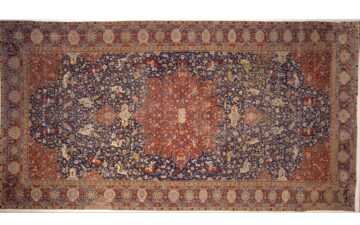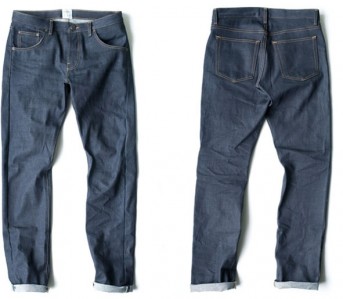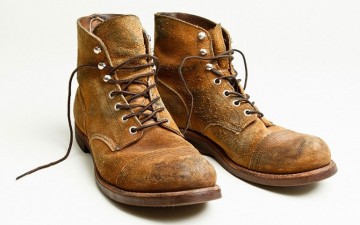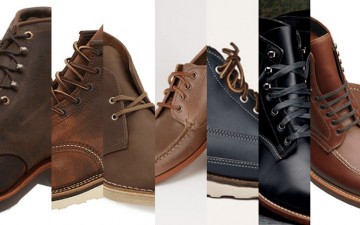If you haven’t heard the hacky salesman pitch about buying quality on what separates you from the earth, you’re about to hear it now, “Spend money on what goes between you and the ground: mattresses, shoes, tires, etc.”
In footwear, at least, there are a lot of options for what can come between you and the pavement. Here’s a rundown on the most common sole types you’ll encounter in welted shoes.
Commando
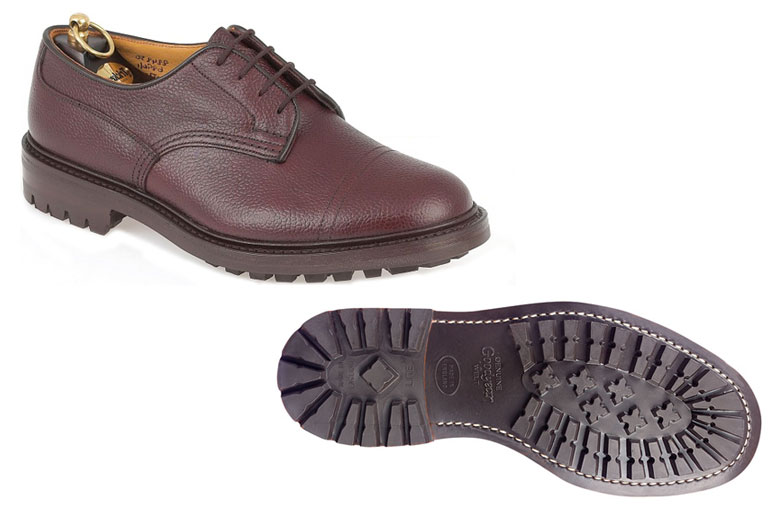
Tricker’s Cap Toe Blucher
The Commando or Lugged sole is your classic hiking/workboot rubber outsole. Known for its thick knobby tread, the commando sole offers great traction and weather resistance, but it can have quite a chunky profile. Born out of tragedy, Italian inventor Vitale Bramante created the sole after six of his friends died in a climbing accident in 1935. He thought their deaths might have been avoided had they been equipped with better footwear. He patented the design and soon founded the company Vibram that would sell the soles all over the world.
Christy Wedge
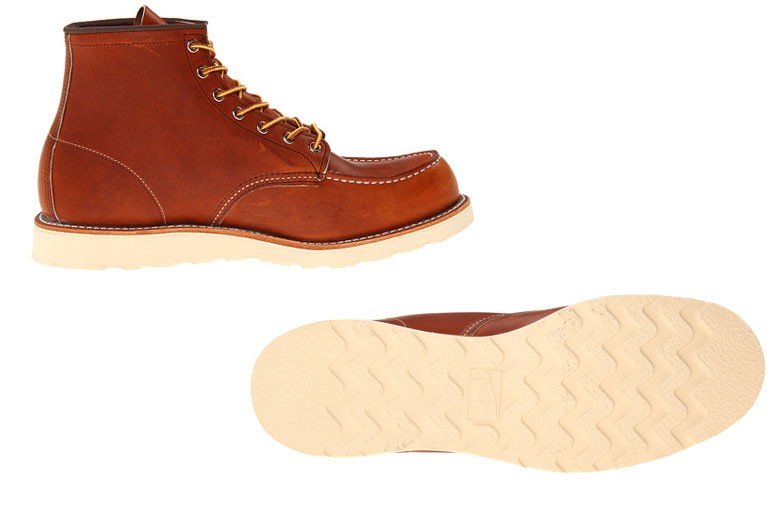
Red Wing 875 Moc Toe Boot. Image courtesy: Zappos
The Christy sole screams iconic mid-century workwear. Most commonly seen on Red Wing boots, the wedge sole combines traction and stability while still remaining relatively lightweight. They can also lend shorter folks a couple extra inches.
Dainite
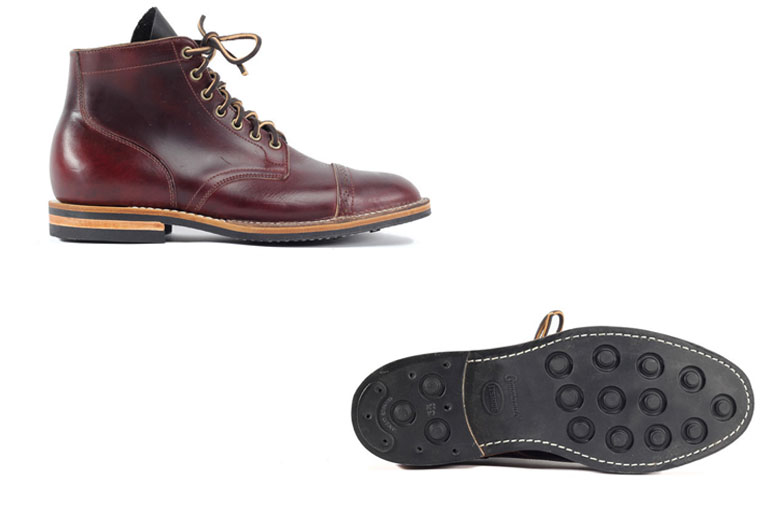
Viberg Service Boot in #8 Chromexcel. Image courtesy: Viberg
The refined cousin of the Commando sole, Dainite is a British company that makes low-profile rubber soles with recessed rubber studs. Dainite is most often seen on English country type shoes, but Canadian bootmaker, Viberg, has been putting them to good use recently as well.
Rubber Camp
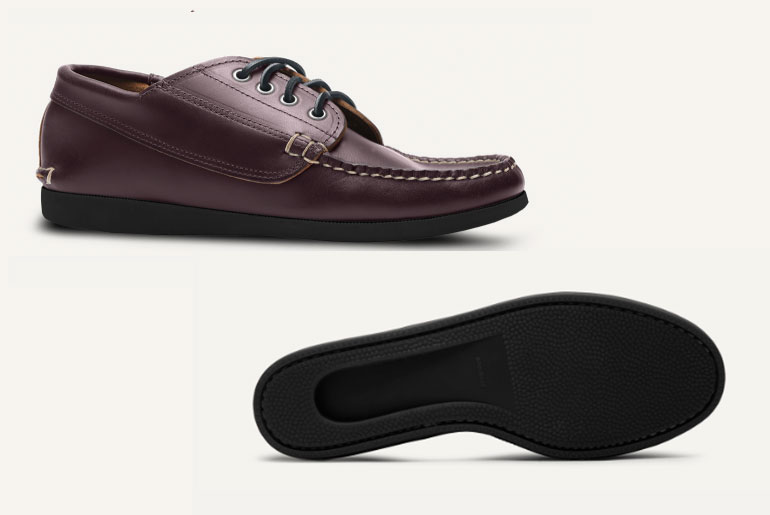
Quoddy Maliseet Oxford. Image courtesy: Quoddy
The camp sole is one of the most casual options out there and oozes a preppy New England vibe. It’s rubber, and commonly covered with little dots that look like asterisks so you get a good bit of traction while remaining lightweight, they even take a large plug from the back of the sole to keep the weight down and the shoe flexible. They’re most commonly found on hand-sewn moccasins from makers like Quoddy, Rancourt, and Yuketen.
Cork Nitrile
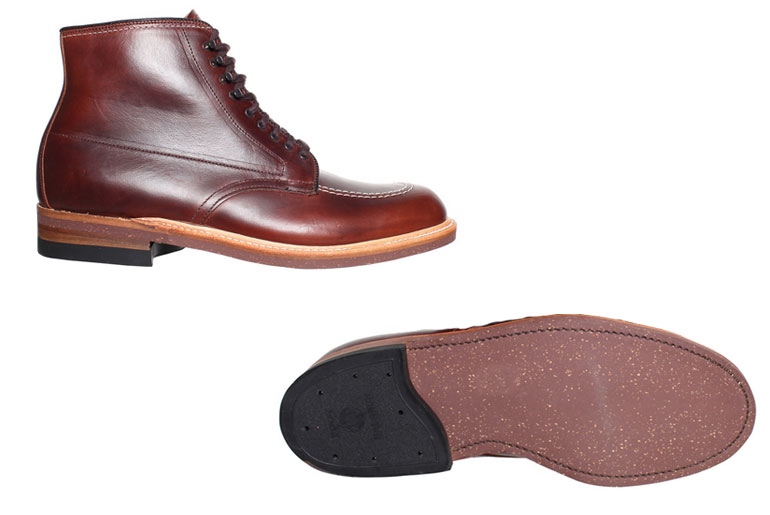
Alden Indy Boot. Image courtesy: Epaulet
Cork nitrile is a rubber composite workboot sole that still has an exceptionally low profile. Mixing pieces of cork with the rubber saves some weight in the sole without losing much in the way of durability. Cork soles usually lack a tread, so nothing you walk through will stick to your soles–including snow and ice.
Plantation Crepe
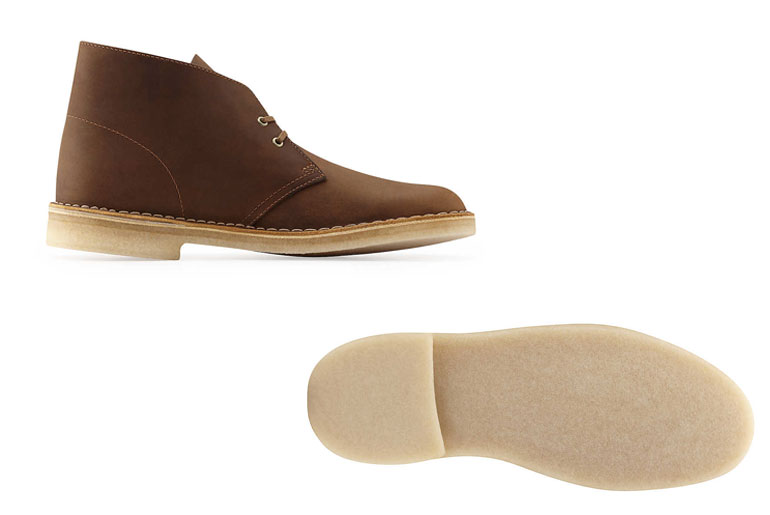
Clark’s Desert Boots. Image courtesy: Clark’s
Crepe rubber is rubber directly from the source–latex coagulated straight off the rubber tree. Or at least that’s how it used to be, most of the crepe rubber soles these days are synthesized. Crepe soles are known for their milky yellow color, almost sticky crinkly texture, and that they’re kind of heavy. The British Army popularized the sole when they put them on their standard issue boot for troops fighting in North Africa in WWII. Clark’s is still making pretty much the same boot to this day.
Leather
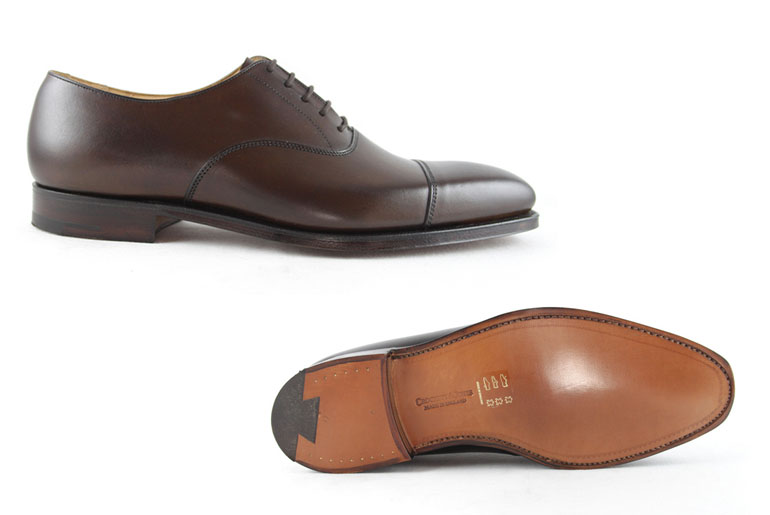
Crockett and Jones Hallam Cap Toe. Image courtesy: Macsamillian
Leather is the original sole, having been used since man first started wearing shoes some five thousand years ago. Today, it’s found primarily on dress shoes as it has the lowest profile and it’s also the least weather resistant–a few miles in snow and slush can completely ruin even the best pairs of leather soled shoes. Despite those shortcomings, they do make a very satisfying “click-clack” sound as you walk on hard surfaces.
Raw Cord
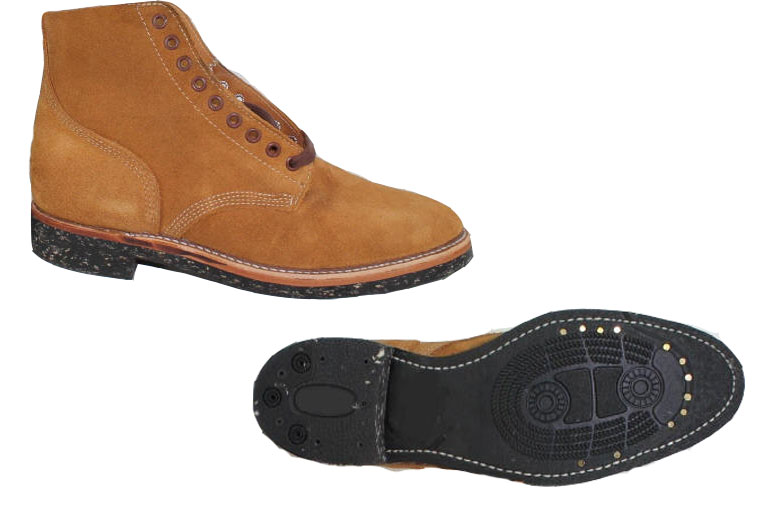
WWII Impressions USMC Boondocker
The raw cord sole is kind of a one off that were created out of necessity during WWII. Rubber was hard to find, but shoemakers still needed to crank out hundreds of thousands of combat boots. To make due, they started melting down old car tires, which had fibrous nylon cords in them to reinforce the tread. No one had the time to take them out, so the raw cord sole was born. It’s generally quite wear resistant and weatherproof, but somewhat rare outside of the WWII repro community.


